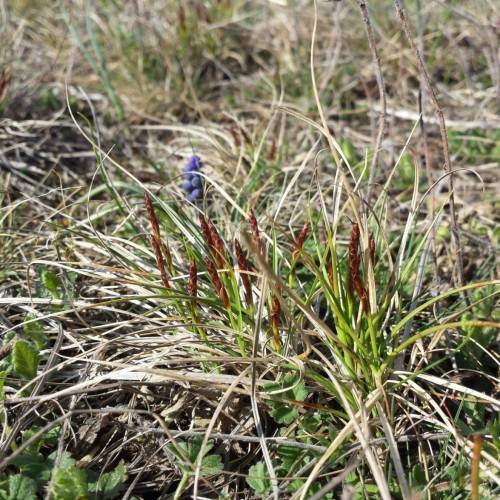
Shaved Sedge
Carex tonsa var. tonsa
Also Known As - Smooth Fruited Oak SedgeWatering:
Minimal
Hardiness Zone:
Sun:
full sun,part shade
Leaf:
Yes
Growth Rate:
Low
Drought Tolerant:
Yes
Salt Tolerant:
Yes
watering
To ensure optimal health for Tinged Sedge, it is important to water as needed, generally every 3-7 days depending on the season and temperatures. Water should be applied so that the soil is evenly moist but not saturated. During the hot summer months, additional water may be needed to keep the soil moist but not waterlogged. In the winter, it is best to wait until the top 1-2 inches of soil is dry before watering again. It is also important to keep in mind that over-watering can cause root rot, so err on the side of under-watering if you're not sure. When watering, be sure to water at the base of the plant rather than from overhead, as this will help to protect the leaves from fungal diseases.
sunlight
Tinged Sedge grows best in full sun, which is considered 6 or more hours of direct sunlight each day. This species of plant thrives in moist soils and is found in numerous different habitats including meadows, marshes, and forested areas. In addition, Tinged Sedge is tolerant of both shade and full sun, so it is not necessary to provide it with a specific amount of sunlight other than the 6-hour minimum for optimum growth.
pruning
Tinged Sedge requires regular pruning to keep it looking its best. Pruning should be done every 1-2 years. The best time for pruning is in late winter or early spring, before new growth starts. For the first pruning of the year, wait for the first few weeks of spring to pass. Starting at the base of the plant, cut off the dead, brown stalks. Cut at the point closest to the ground, but make sure not to over-prune to the point of damaging healthy shoots. The second pruning of the season can take place about 6 weeks later, this time cutting off the dead, brown stalks at the base as well as any spindly stems. After the initial pruning of the year, Tinged Sedge can be touched up throughout the season to maintain its neat, mounded shape.
